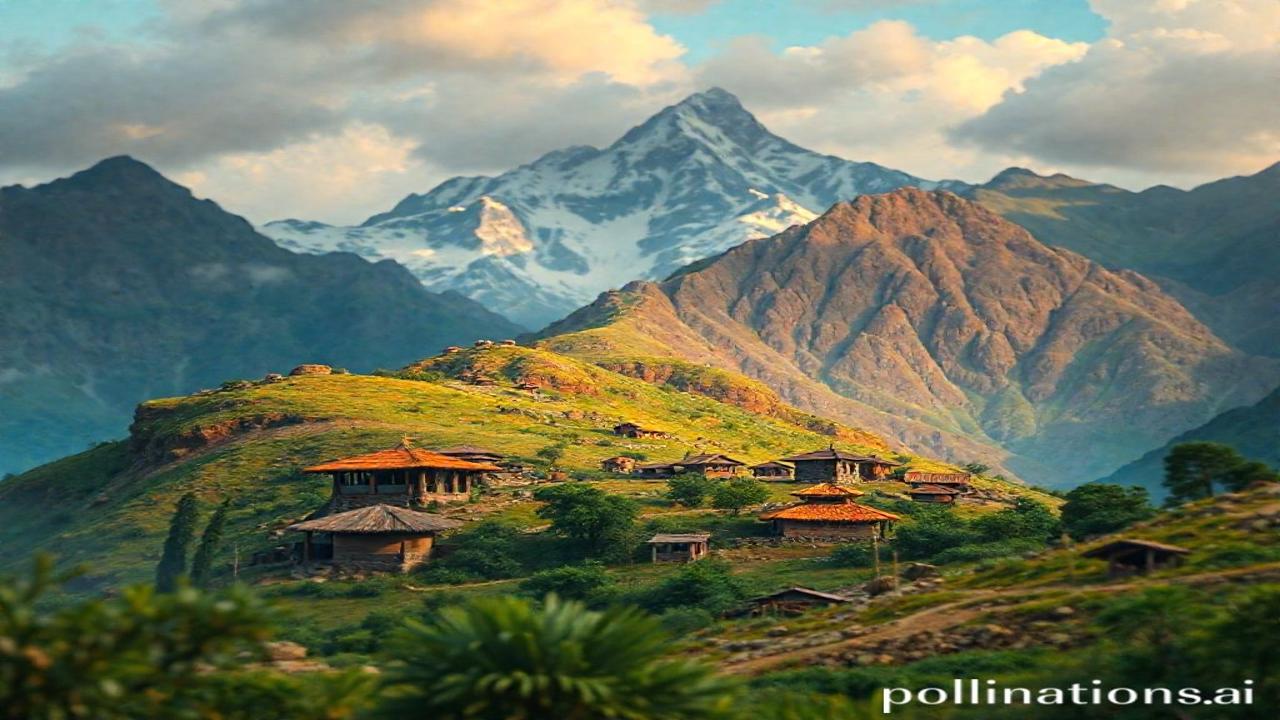Pahadon Ki Goad Mein Basi Zindagi: Exploring Mountain Ecosystems and Their Tribal Communities
“Kabhi socha hai, dhoop mein sukhti hui lakdi ki woh khushboo, ya barfili hawao mein gunjti hui mantras ki aawaz… yeh sab kahan le jaati hai?” These are the whispers of the mountains, echoes of a life intertwined with nature, and the heartbeat of the tribal communities who call them home. Let’s journey into these enchanting landscapes and discover the stories they hold.
The Ancient Embrace: A Historical Overview
Mountain ecosystems, especially in India, aren’t just geographical features; they are living, breathing entities shaped by millennia of interaction with tribal communities. From the Himalayas in the north to the Western Ghats in the south, these areas have been home to indigenous populations for centuries.
Think about it: The Himalayas, for example, have seen the rise and fall of empires, the passage of traders along the Silk Road, and the quiet persistence of tribes like the Lepchas of Sikkim or the Gaddis of Himachal Pradesh. The Adivasis of the Nilgiri Hills in the Western Ghats, like the Todas, have meticulously preserved their unique culture and pastoral traditions for generations.
Yeh communities, often marginalized in mainstream narratives, are not just inhabitants; they are integral parts of the ecosystem. Their traditional knowledge – about medicinal plants, sustainable farming practices, and resource management – is invaluable for preserving these fragile environments. Dates and names, while important, don’t tell the whole story. The true importance lies in understanding the symbiotic relationship between these communities and their mountains.
Zameeni Sach: Living and Breathing with the Mountains
Imagine waking up to the sight of snow-capped peaks, the crisp mountain air filling your lungs. For the tribal communities, this isn’t a vacation; it’s everyday life.
-
A Day in the Life: Consider a Gaddi shepherd tending to his flock in the Himalayan foothills. His tools are simple: a staff to guide the sheep, a woven bag for his meager belongings, and an intimate understanding of the mountain passes and weather patterns. He knows which herbs can heal his sheep and where to find water even in the driest months.
-
Rulers and Saints (of a different kind): While empires fought for control, these communities maintained their own form of governance, often based on consensus and respect for elders. Spiritual leaders and healers were revered, holding knowledge passed down through generations.
-
The Dance of Life: Festivals are woven into the fabric of their lives, celebrating harvests, honoring deities, and reaffirming their connection to the land. Picture a vibrant dance around a bonfire, the beat of the drums echoing through the valleys, stories of ancestors being recounted through song and movement.
“Ma Devi ne phir se varshaa dene ka aashirwaad diya hai,” an elder might say, “Humein dhanyavaad karna chahiye.” This dialogue reflects their deep connection to the natural world and their gratitude for its bounty.
Dharohar aur Pehchan: A Legacy in the Modern World
Today, the echoes of these ancient traditions can still be heard. We see it in the intricate patterns of tribal textiles, the unique architectural styles of mountain villages, and the continued practice of traditional healing methods. Even in modern India, the respect for nature and the community-centric values that are central to tribal cultures offer valuable lessons.
The concept of “Bharatiyata” itself is incomplete without acknowledging the contributions of these communities. They represent a vital part of India’s diverse heritage, a reminder that progress shouldn’t come at the cost of cultural identity and environmental sustainability. We see their influence in eco-tourism initiatives that prioritize community involvement and in conservation efforts that incorporate traditional knowledge.
Mazedar Tathya ya Bhram-Bhanjak: Truths and Misconceptions
-
Myth: Tribal communities are resistant to change and innovation.
-
Truth: While they value their traditions, many communities are actively adapting to modern challenges, embracing new technologies while preserving their cultural heritage. For example, some are using solar power to light their homes or participating in community-based tourism initiatives.
-
Fun Fact: Many tribal languages contain a wealth of knowledge about local flora and fauna, including the properties of medicinal plants. This knowledge is often passed down orally, making it vulnerable to loss as languages disappear.
Drishya aur Bhavnayen: Painting the Mountain Landscape
Imagine the scent of pine needles and damp earth after a rain shower, the feeling of cool mountain air on your skin, the sound of a distant waterfall cascading down the rocks. The temple walls, often adorned with intricate carvings, feel rough and ancient to the touch. The streets echo with the laughter of children and the bleating of goats. This is the sensory tapestry of mountain life, a symphony of sights, sounds, smells, and textures that connect people to the land in a profound way.
Antim Vichar ya Uddharan: A Closing Reflection
The mountains are not just landscapes; they are living libraries, holding stories of resilience, adaptation, and a deep connection to nature. As we strive for progress, let us remember the wisdom of the tribal communities who have long understood the importance of living in harmony with the earth.
“Vasudhaiva Kutumbakam” – The world is one family. Let’s extend that familial embrace to include the mountains and the communities who call them home. Let’s learn from their wisdom and work towards a future where both culture and environment thrive.
